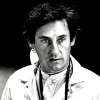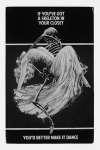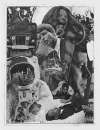Richard
Hamilton
Richard Hamilton, a pioneer of British Pop Art, bridged fine art with consumer culture through collage and multimedia approaches. If you’re looking for Richard Hamilton original prints and editions for sale, or would like to sell, request a complimentary valuation and browse our network’s most in-demand works.
Richard Hamilton art for sale
Discover Richard Hamilton prints for sale, exclusively available through our private network of collectors. Explore signed and unsigned screenprints, lithographs, digital prints, and rare editioned proof prints by era-defining blue chip artists.
Sell Your Art
with Us
with Us
Join Our Network of Collectors. Buy, Sell and Track Demand
Biography
Richard Hamilton, born in 1922 in London, is celebrated as a pioneer of Pop Art. His early education at the Royal Academy Schools and the Slade School of Fine Art laid the foundation for his critical approach to art. Hamilton's career took off with the 1956 collage Just What Is It That Makes Today's Homes So Different, So Appealing? This work was pivotal because it epitomised the burgeoning Pop Art movement in Britain. The collage juxtaposed elements of mass culture and consumerism, encapsulating the era's zeitgeist, setting a precedent for the integration of popular media into fine art. Its witty and critical take on modern living made it an iconic representation of post-war British society.
Throughout the 1960s, Hamilton's work continued to evolve. He became fascinated with the cult of celebrity, the allure of consumer goods, and the growing influence of advertising. His engagement with these themes was both critical and celebratory, blurring the line between fine art and commercial aesthetics.
Printmaking was an integral part of his Hamilton's broader practice, reflecting his fascination with media and technology. His 1967 screenprint I'm Dreaming Of A White Christmas, derived from a still of Bing Crosby in the 1942 film Holiday Inn, exemplifies his ability to transform popular media into art. Hamilton's legacy is profound, challenging the boundaries between art and popular culture.
Significant exhibitions of Hamilton's work have been held at renowned institutions, celebrating his contributions to Modern Art. In 2014, the Tate Modern held a retrospective that solidified his status as a seminal figure in the narrative of British art.
By the time of his death in 2011, Hamilton had redefined the way we perceive art in the context of a rapidly evolving cultural landscape. His body of work remains a testament to a career marked by constant reinvention and a reactive engagement with the zeitgeist.









































